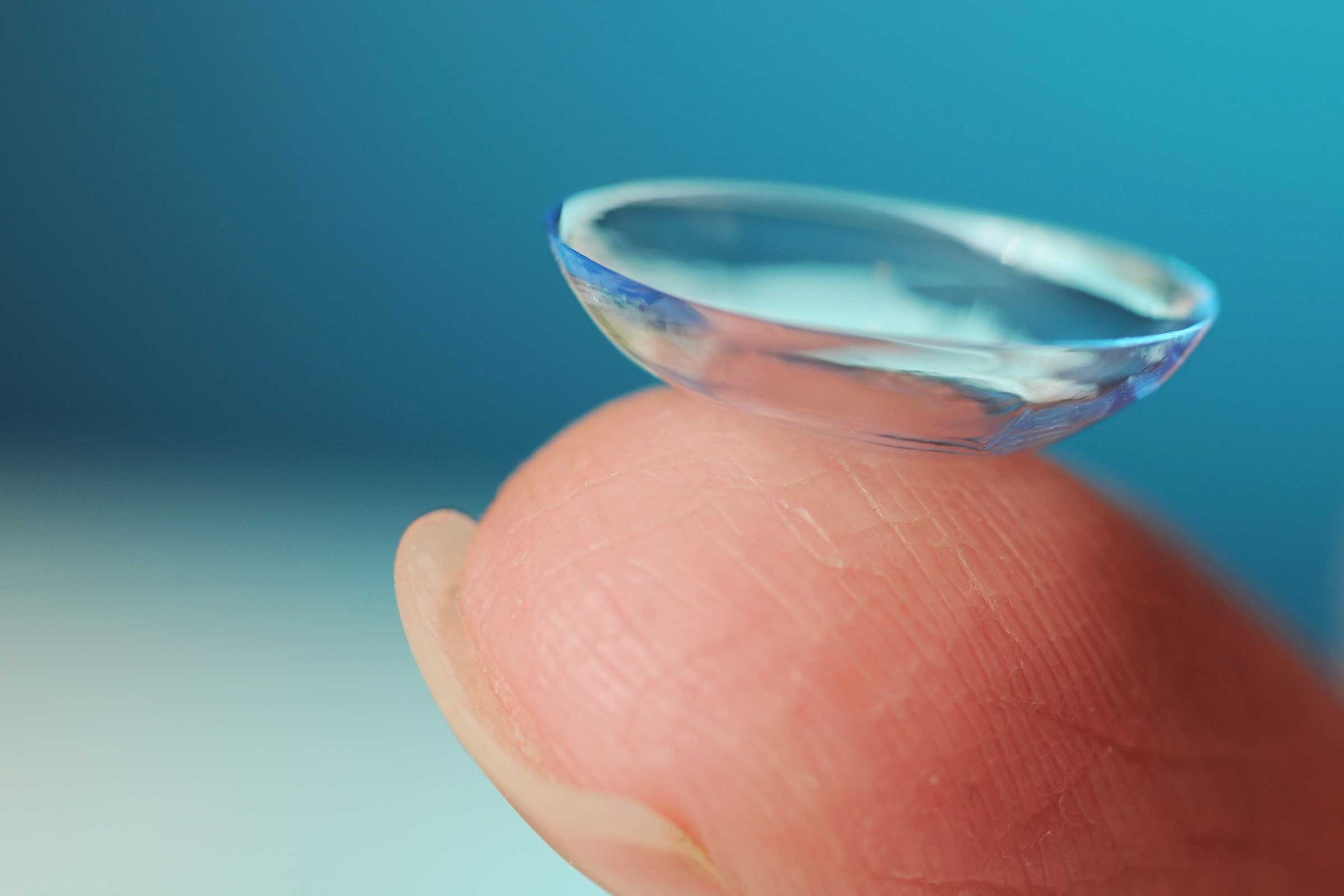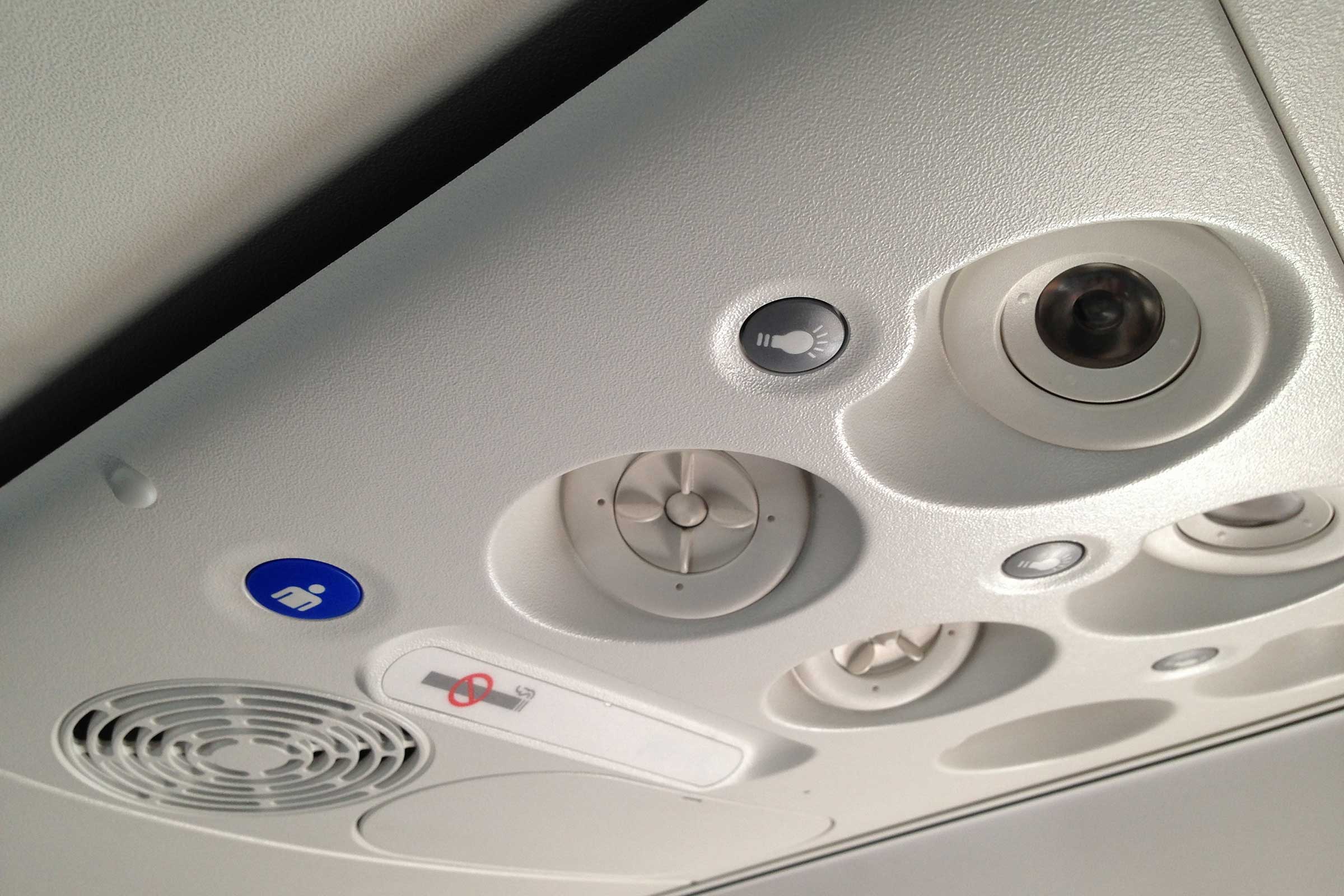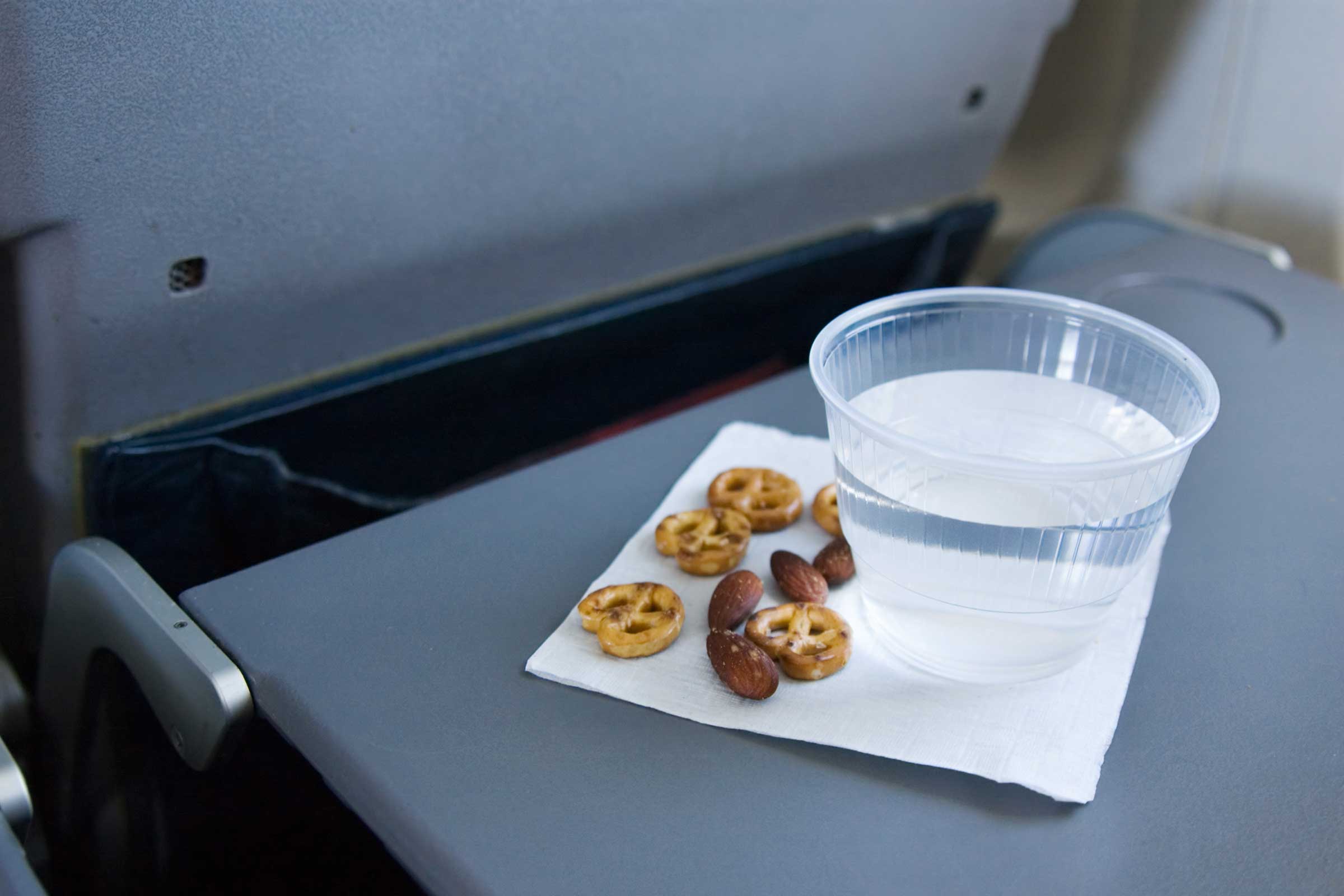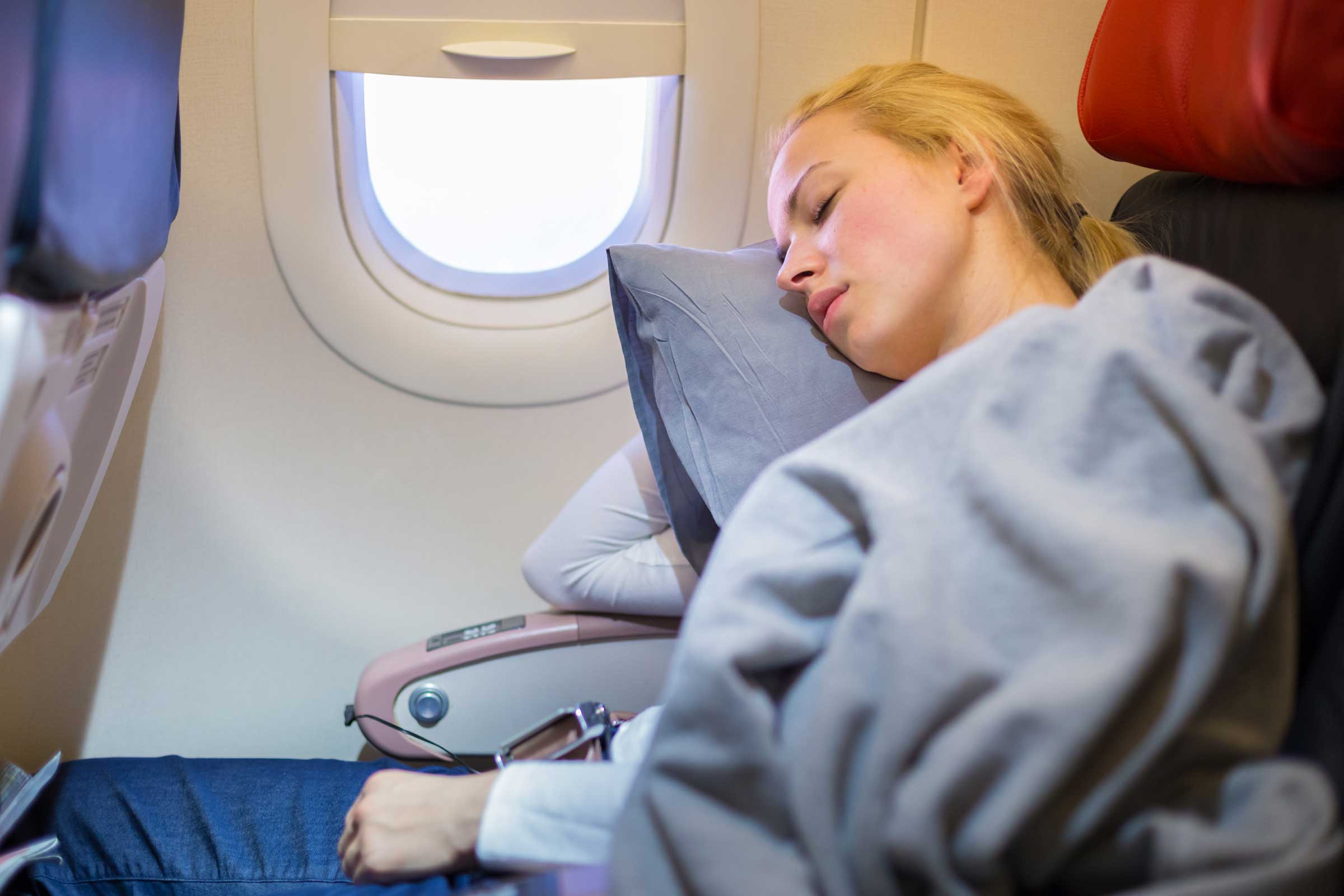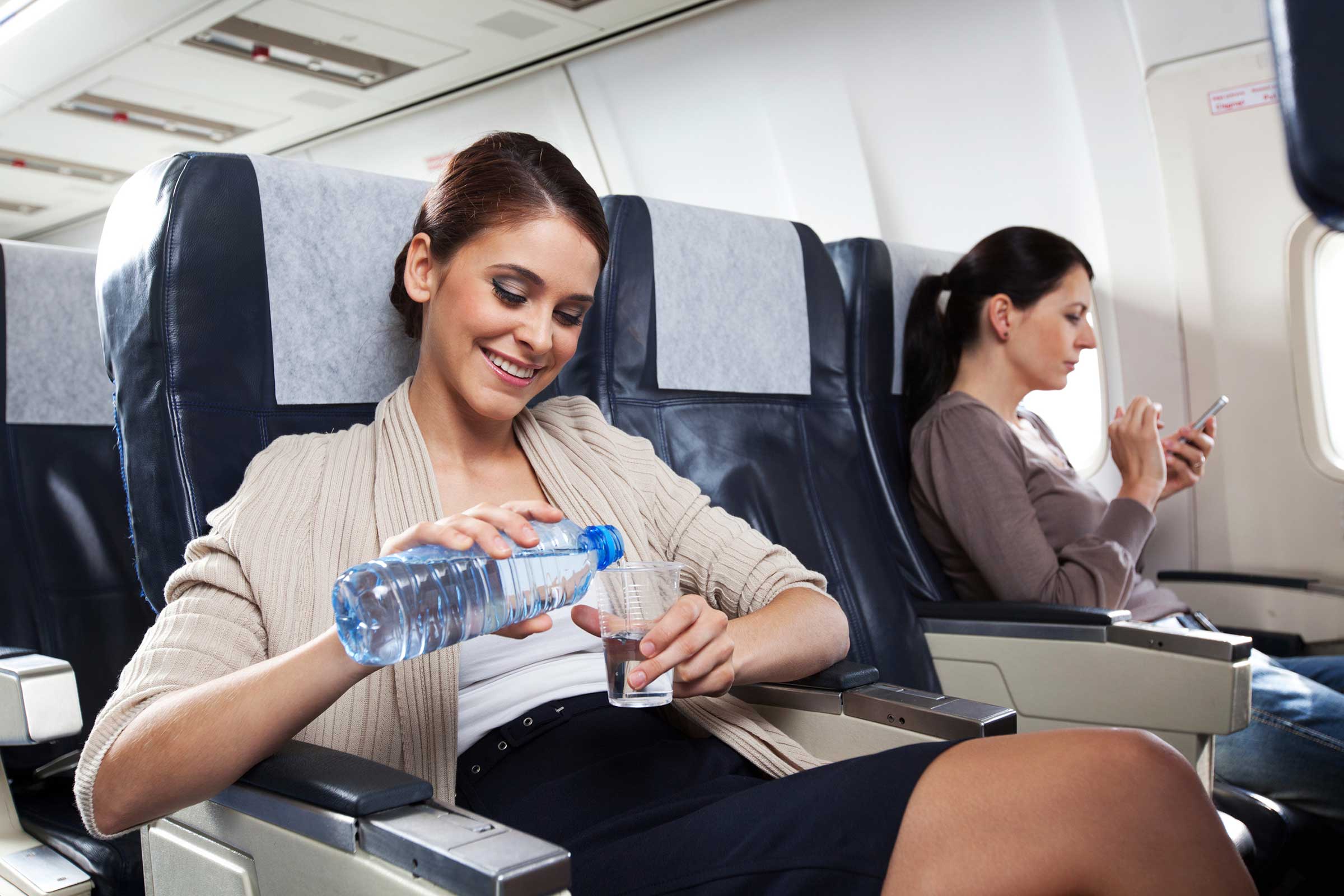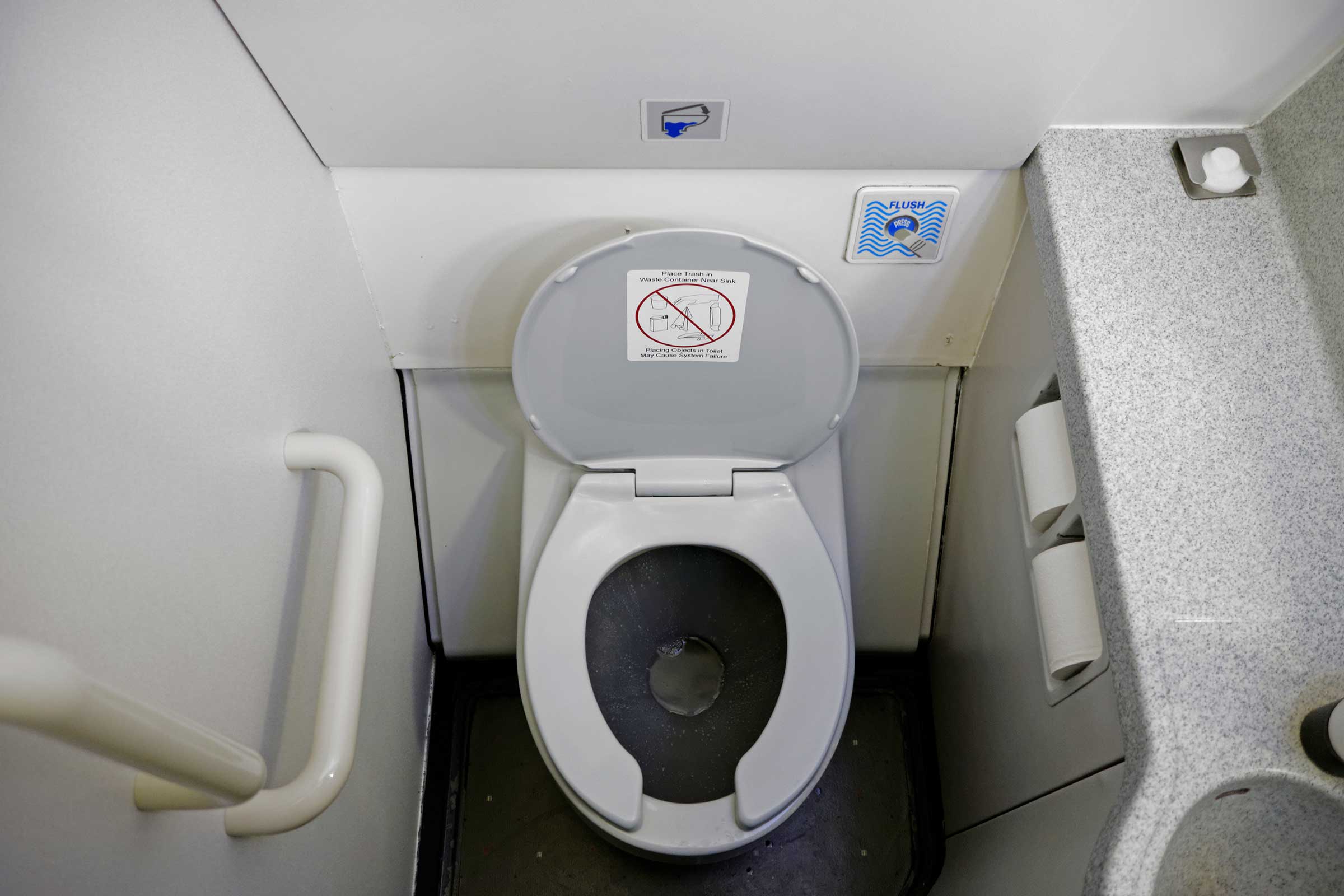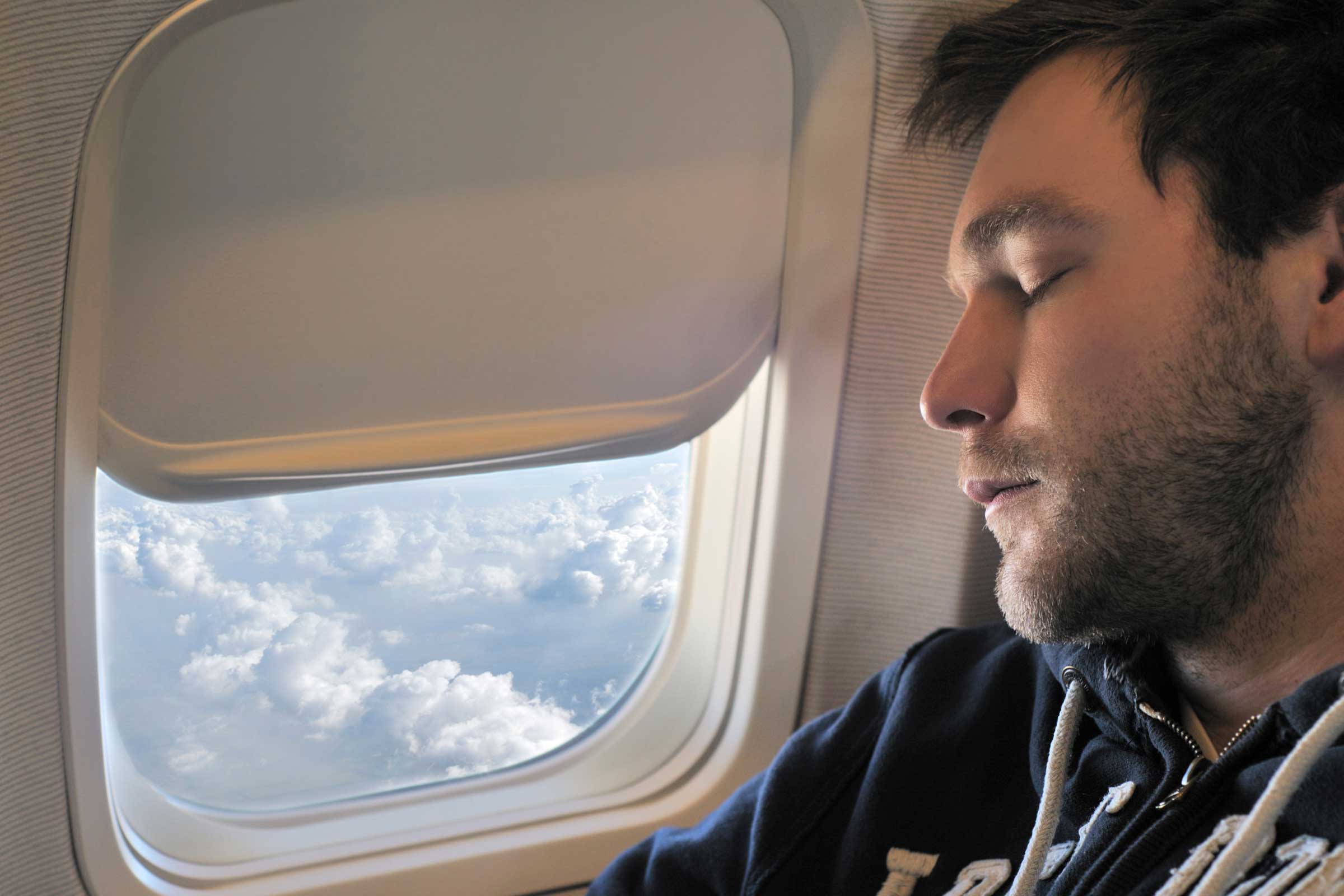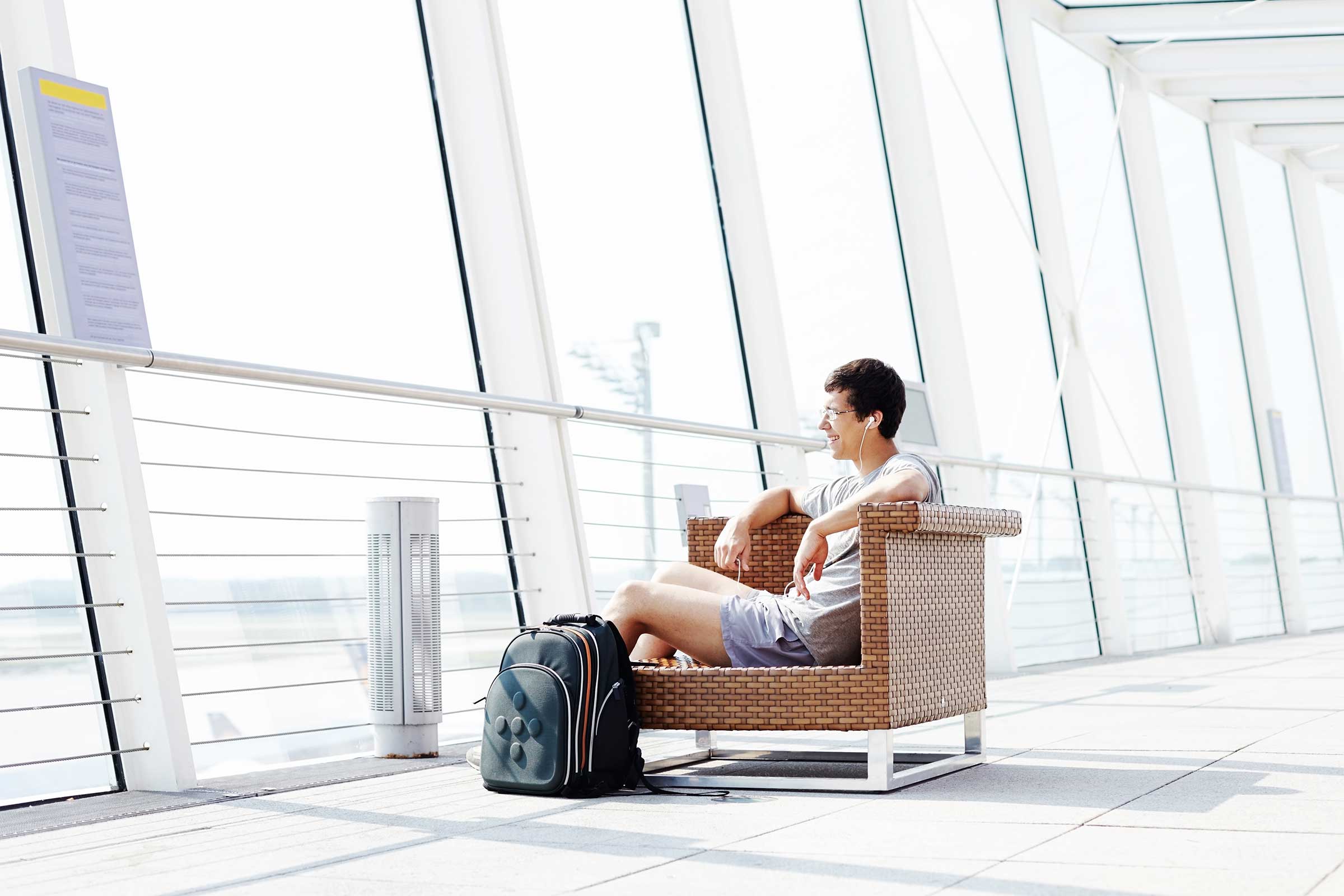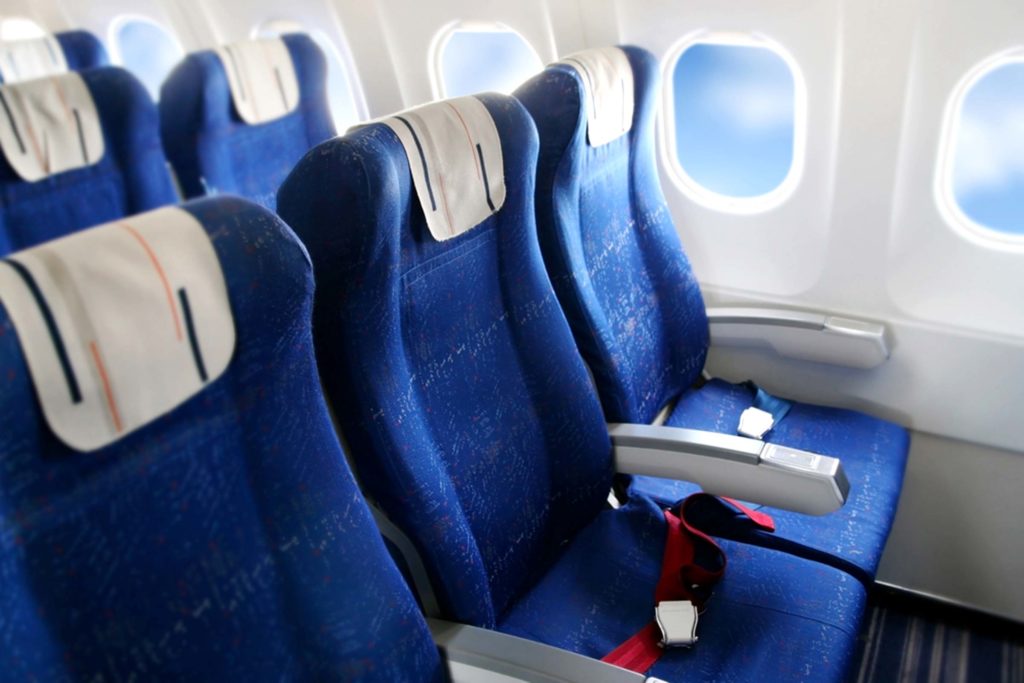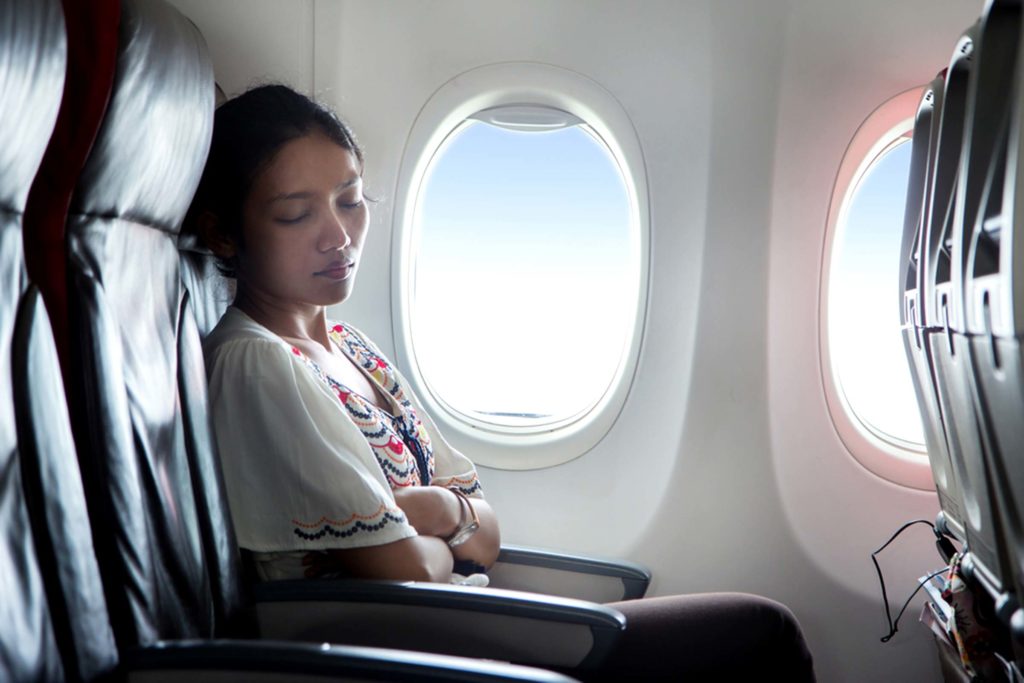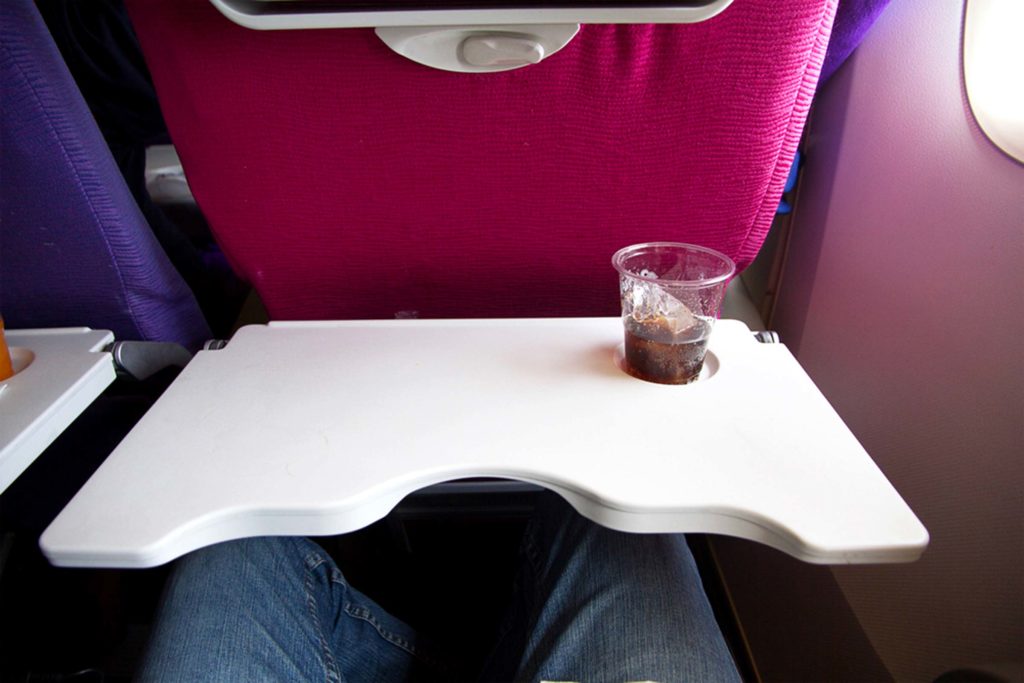Traveling is stressful as it is, so let’s not add the burden of getting sick from the flight to your itinerary. Experts reveal where the germs are hiding and how to stay healthy and comfortable while airborne.
Please! Don’t walk around barefoot
Flight attendants have seen everything from vomit to blood to spilled food hit that carpet. “We see people walking from their seats into the bathrooms all the time barefoot and we cringe because those floors are full of germs,” said Linda Ferguson, a flight attendant for 24 years. “Never walk barefoot into the bathroom or the galley area because sometimes we drop glasses and there could be sharp glass there, too.”
Skip the ice in your drink
An EPA study in 2004 found that out of 327 aircraft’s water supplies, only 15 percent passed health standards. Since the 2009 creation of the EPA’s Aircraft Drinking Rule Act, standards have risen and most airplanes don’t serve drinking water from the tap, but their ice cubes, however, are often still made from the same water. “Water tanks on an airplane are old and they’ve tested them and bacteria is in those tanks,” said Ferguson. “I would definitely drink bottled water—that’s why they board tons of bottles on an airplane.” This is why airline food tastes so bad.
Don’t sit in your seat the entire flight
On an airplane, you are at a higher risk to develop deep vein thrombosis (DVT) which is a type of blood clot that usually forms in your legs. DVT has been coined as “economy-class syndrome” and walking around for a few minutes or standing up to stretch are good bets to help prevent it. (Just remember to put your shoes on!) Also, try to avoid tight clothing that could cut off circulation while in flight. “The most important thing is to try to move around and move your legs at least once every hour,” said Catherine Sonquist Forest, MD, a primary care doctor at Stanford University Health Care. “If you can’t get up, you can do exercises in your seat by lifting alternate knees up to your chest and twisting in your chair from side to side.”
Ditch your contact lenses
If you can, opt to wear glasses in flight. The air in the cabin is very dry and can cause irritation to your eyes. Also, if you’re a known sky snoozer, falling asleep in contacts not made for overnight wear can be especially irritating.
Don’t turn off the air vent over your seat
If the air blowing makes you chilly, it might be smarter to throw on a sweatshirt rather than turn off the vent. Doctors recommend that the adjustable air over your seat should be set to medium or high in flight so that any airborne germs can be blown away before they enter your personal zone.
Don’t eat food after it’s fallen on the tray table
Yuck! That tray table doesn’t get sterilized between flights, so unless you’ve brought your own disinfectant or place mat, let that cookie crumb go if it hits the tray and not your plate. “The tray table is notorious,” said Stephen Morse, professor of epidemiology at Columbia University’s Mailman School of Public Health. Ferguson adds that tray tables are usually only wiped down once a day, when the plane goes into an overnight station. “Those tray tables are used for all kinds of things,” said Ferguson. “During flights, I’ve seen parents changing babies on top of tray tables. I’ve seen people put their bare feet on top of tray tables.” One study found that trays harbor an average of 2,155 colony-forming units of bacteria per square inch. Compare that with the 265 units on the lavatory flush button. And while all samples tested negative for potentially infectious bacteria such as E. coli, you’ll still want to steer clear of that tray.
Don’t use the blankets
Another airplane item that doesn’t get a thorough cleaning between flights? Yup, those blankets and pillows offered in the seatback are recycled flight to flight and usually don’t get properly washed until the day is over. Items like pillows and blankets are ideal places for germs and lice to camp out and spread from person to person. “I see people wrap their feet in the blankets, I see people sneeze in the blankets,” Ferguson adds.
Don’t forget to stay hydrated
Parched throat mid-flight? Don’t just blame the salty snacks. Airplane cabins are known for their low humidity because the manufactured air in the cabin is made to mimic the highest altitude humans can breathe at, usually between 6,000 and 8,000 feet, according to the World Health Organization. “For every leg of flight, each flight attendant will try to drink a full 16 oz. of water,” said Ferguson. “That’s the most important. Hydrate, hydrate, hydrate.”
Opt out of coffee or tea
You don’t want to drink anything that could possibly be made with the tap water from the plane. Even though the water for tea and coffee is usually boiled, if you can opt for bottled water or another beverage from a sealed container you should. Another reason to avoid coffee and tea: Caffeinated beverages aren’t your best bet while flying. “Caffeine slightly dehydrates you,” Dr. Forest says. “It’s not a huge problem to drink caffeine but include water also.”
Don’t booze too much
While a nice glass of wine can take some of the edge off of traveling, alcohol is extremely dehydrating. Combine that with the low humidity of the plane and your body’s in for a drying experience. In addition, the thin-air of a plane makes the effects of alcohol hit you faster, and harder. Not to mention that excessive drinking lowers your immune system in general, so this tip goes for pre-flight rituals at the airport bar as well. “One drink in the air is like drinking two on the ground—it can affect you faster,” said Ferguson. “We’ve been known to water down drinks a lot or if someone just keeps wanting glasses of wine, we’ll pour half a glass instead of a whole glass.”
Don’t touch the flush button in the bathroom
Like other public spaces on the plane, the bathroom is also a major place where germs hide out. To protect yourself, wash your hands thoroughly and use a paper towel to press the flush button and open the door. “When you go to the bathroom, the right thing to do is always wash your hands, dry your hands with a towel, and then use the towel to turn off the water and even open up the door,” says Dr. Forest. “You don’t want to not flush the toilet, everyone should flush the toilet, but wash your hands with soapy water and use a towel.”
Don’t fall asleep against the window
You’re not the only one who has had their head pressed against that wall. Who knows who else has breathed, sneezed, coughed against that glass you doze off against while your head’s in the clouds? “I see plenty of people carry Lysol wipes with them that will wipe the area around their seat,” said Ferguson.” If there was a backlight and they could light up a plane with all the germs, I think it would petrify everybody. My rule of thumb, and I never get sick, is I never put my hands in my mouth or near my face.”
Don’t wear shorts
If you can, try to wear clothing that covers skin that could touch your seat. Like other parts of the plane, the seats aren’t cleaned between flights and could be places where germs hide. “I think you have to assume that most surfaces in an airplane are probably no cleaner than, and in most cases not as clean, as any other similar public space simply because they’re not cleaned as often and people are in very tight quarters,” said Morse. “All the normal things we usually deal with, we don’t normally think about when we sit down in shorts in a seat that’s been used by many other people.”
Don’t feel embarrassed to tell a flight attendant you’re not feeling well
Never think your health and safety is an inconvenience to what may seem like an already stressed flight crew. Flight attendants are trained to help with medical emergencies, even learning how to properly handle a childbirth before becoming certified. “Flight attendants are completely trained,” said Ferguson. “If you’re not feeling well definitely speak up. You don’t want to be sick on a plane—that’s the worst.”




